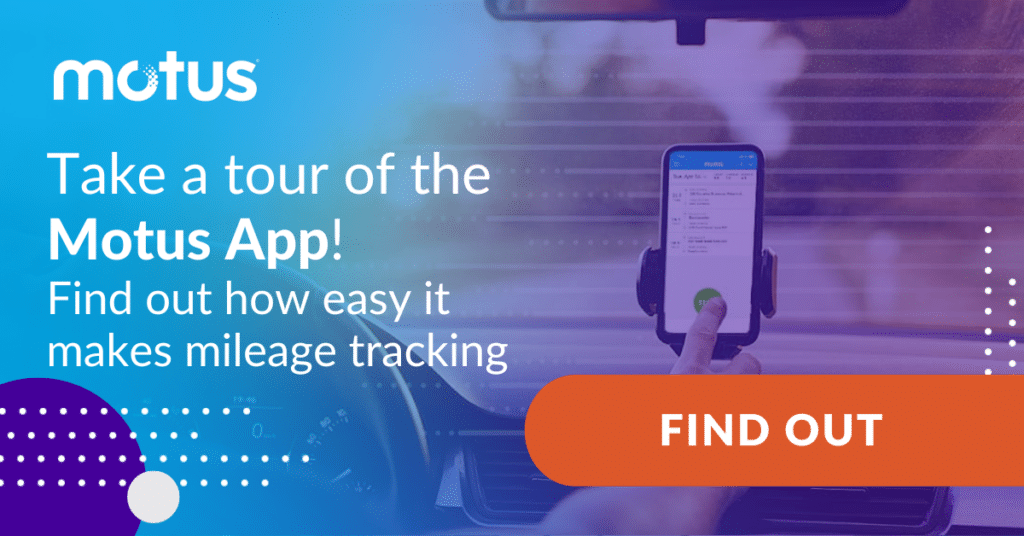Employee integrity within the workforce is something desired by all, but sometimes it is inevitably unattainable. As it turns out, one of the most common examples of employee theft happens to be car mileage fraud. In fact, car mileage fraud occurs even more frequently than employees over reporting tips, inflating the cost of items beyond their true price or submitting expenses for returned purchases.
The Facts of Mileage Fraud
According to a Chrome River Survey, roughly 5% of respondents revealed that they had committed some version of expense fraud. At first glance, this percentage may not appear all that astounding, but just think: if even 25 of your 500 mobile employees are falsely reporting mileage, there is no way to justify this as being beneficial for your organization.
You may be thinking, “Perhaps employees lack a certain understanding of the process and are just making honest reporting mistakes, could this be the case?” This could be the case for some, but there’s a much larger issue at hand. Mileage fraud happens because of a lack of insight into how mobile workers are recording their mileage and a way to verify their distance.
Most Common Forms of Mileage Claim Fraud
Mileage fraud isn’t one action or infraction. There are several ways mileage fraud may sneak into the workplace. Those ways include falsifying journeys, exaggerating distances, merging personal and business trips and claiming for shared journeys. Let’s take a look at each of these in further detail.
Falsifying Journeys
This one is simple. Without insight into your mobile workforce, an employee can simply invent a business trip and claim mileage for it. It’s unpleasant to think someone might just make something up to receive a reimbursement. It’s unlikely to happen as consistently as other methods of mileage fraud, but it is a potential product of a program that lacks oversight.
Exaggerating Distances
When filling out manual mileage logs, an employee might look at their odometer and round up. If they drove 19 miles, for the trip, they might call it an even 20. This is the most common method of mileage fraud. And it seems fairly harmless. What’s a few cents for each mile? Well, there are a few things to consider.
First, consider the mileage reimbursement rate the company is using. At the IRS mileage rate, it’s over 60 cents per mile. Now, consider that the example above is one trip in a day. Multiply that rounding process across all the trips in their day, or all the trips in their week or month. This snowball effect grows quickly and can cost your business a lot of money. And if one mobile worker is doing a little rounding, you can bet they aren’t the only one.
Merging Personal and Business Trips
Let’s say an employee who drives for work needs to run a personal errand. So, following a business meeting with a client offsite, they drive to the store. Done with their errand, they proceed to a meeting with another client. At the end of the day, they mark that little errand as a business trip. After all, they did end up going from one business location to another. They just had a small detour.
This is another example of mileage fraud that might not seem like a big deal, but it can add up quickly. It’s perfectly okay for a driving employee to take some time out of their day to run an errand. It isn’t okay to include it as a business trip. Unfortunately, companies with no insight into how their mobile workforce records their mileage won’t catch this issue.
Claiming for Shared Journeys
Two employees are needed to assist at an offsite location. Because they’re going from the same place to the same destination, they carpool. At the end of the day, the driving employee submits their mileage log. And, because they could’ve driven too, the person that carpooled with them submits a mileage log as well. In many ways, this is falsifying a journey. Not because the trip didn’t happen. It did. But, whatever rationale they have for submitting business mileage when they didn’t drive their personal vehicle, it’s still mileage fraud. Again, a vehicle program without oversight isn’t likely to catch this.
The Root of the Mileage Fraud Issue
Part of why this phenomenon appears to be a recurring theme is the old, nation-wide way of reimbursing mileage expenses. The vast majority of companies continue to require their mobile employees to submit their mileage reports via paper mileage logs or Excel spreadsheets. These processes allow employees to create their own destiny. They have free rein to submit reports at their personal discretion. This can lead to both inaccuracy and unearned cash in the pockets of your workforce. Not only can this be extremely costly for your company, but also for your employees if the IRS decides to come knocking.
Preventing Employee Mileage Reimbursement Fraud
So your program relies on manual mileage logs, which provide little to no insight into your mobile workforce. That doesn’t mean the company is doomed, past the point of no return. There are plenty of steps you can take to get your program on the right track. Here are a few to consider:
- Create an effective mileage reimbursement policy. This doesn’t just mean waiting for the IRS to release their annual mileage rate and continuing to use that measure as a reimbursement. This means creating a policy that outlines which roles require driving and which employees don’t. This means taking a look at your current vehicle reimbursement program and asking if it’s the best fit for your company. It means exploring other options to make sure there isn’t something better.
- Separate the processes of mileage reimbursement and employee compensation. What’s the difference? Employee compensation is generally seen as a package, offered to entice potential candidates. A company might not be able to offer them a higher salary, but they can provide a monthly car allowance. However, this form of compensation isn’t tied to business driving, making it taxable. It also offers no visibility into the mobile workforce. On the other hand, mileage reimbursements depend on mileage logs. Without a mileage log, driving employees receive no reimbursement.
- Implement a review process and consider using a mileage tracking app. This option will help your company cut down on falsified journeys, shared journey mileage claims and mileage logs that fail to meet IRS standards for compliance. That review process comes at a price: increased administrative burden. Depending on the size of the mobile workforce and the level of mileage driven, this may be work for several employees.
- Conduct periodic reviews and audits for compliance. Your company performing reviews and audits internally helps in two ways. One, you will hopefully uncover and get to the root of mileage fraud problems, potentially saving your company in mileage overspend. Two, in the event of an IRS audit, you will hopefully have caught and fixed any red flags. As with the above, reviews and audits take time and require increased administration from employees.
- Automate the reimbursement process to improve mileage verification. This may be the last item listed, but it should be the first effort for a number of reasons. With the right vendor, employees capture their trips using the GPS in their phones and submit their business miles in IRS compliant mileage logs. This also cuts down considerably on the need for audits and reviews.
Advancing With Automation
In order to reduce your organization’s risk of car mileage fraud, automation should be a top priority. As documented by a Forrester Research survey of finance leaders, 73% of respondents confessed they would be re-evaluating and modifying their T&E systems within six months. Simply put, the purpose of technology is to make people’s lives easier. As it turns out, mileage reporting and reimbursement should be no different.
With automated mileage tracking and reporting technology, your organization will immediately gain more visibility and insight into expense reports. That allows your company to reduce costs due to car mileage fraud. Even further, your company could benefit tremendously by opting for IRS compliant, fixed and variable rate reimbursement programs.
Interested in learning more about what you should be looking for in a mileage capture app? You can learn more in our post on what makes the Best Business Mileage Tracker.










